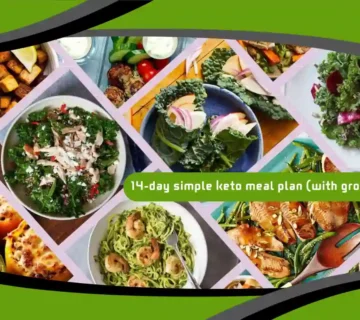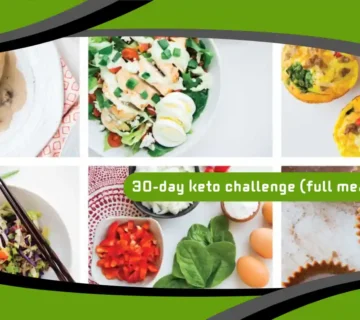The ketogenic diet, commonly known as the keto diet, is a low-carbohydrate, high-fat nutritional approach designed to shift the body’s primary fuel source from carbohydrates to fats. When carbs are restricted to a minimal level, the body enters a metabolic state called ketosis. In ketosis, the liver converts fat into molecules called ketones, which serve as an alternative energy source for the brain and muscles. This mechanism not only supports fat loss but also helps stabilize energy levels and blood sugar throughout the day.

Why Keto is Ideal for Beginners Seeking Weight Loss
For individuals new to dieting or those who have struggled with yo-yo dieting, keto provides a sustainable, appetite-reducing alternative. By increasing fat intake and cutting carbs, the body naturally reduces hunger hormones such as ghrelin. As a result, beginners often find themselves feeling fuller for longer periods, reducing the need for constant snacking. This satiety factor, combined with efficient fat metabolism, can kickstart significant weight loss within the first few weeks of the plan.
Planning Ahead: The Key to Keto Success
Success on the keto diet doesn’t come by chance—it requires structure and planning. Beginners benefit greatly from preparing meals in advance, keeping healthy fats and low-carb foods accessible, and avoiding hidden sugars. Having a clear 7-day meal plan ensures you meet your macros without deviation. It also reduces decision fatigue, making it easier to stay consistent even during busy weekdays. Preparation lays the foundation for a smooth and successful ketogenic journey.
Calculating Your Keto Macros
Before jumping into a meal plan, understanding your macronutrient needs is crucial. Keto typically consists of 70-75% fat, 20-25% protein, and only 5-10% carbohydrates. Tools like macro calculators can help you determine the exact grams of fat, protein, and carbs based on your age, weight, height, and activity level. For beginners, staying within these ranges will help you reach ketosis and maintain energy levels. Always prioritize nutrient-dense foods to fulfill your macros efficiently.
The Importance of Quality Fats in Keto
Not all fats are created equal. While keto promotes high-fat intake, the quality of these fats directly impacts your health. Opt for unsaturated fats like avocado, olive oil, nuts, and fatty fish. Avoid trans fats and heavily processed oils, which may contribute to inflammation and other health risks. Quality fats not only support ketosis but also enhance heart health, cognitive function, and hormonal balance.
Protein on Keto: How Much is Enough?
While protein is essential for muscle repair and satiety, too much can kick you out of ketosis. On a ketogenic plan, moderation is key. Lean meats, poultry, eggs, and low-carb dairy are great options. Overconsumption of protein may lead to gluconeogenesis, where the body converts excess protein into glucose. Striking the right balance will ensure muscle preservation without sabotaging your ketogenic state.
Vegetables That Fit into a Keto Lifestyle
Low-carb vegetables are a cornerstone of a healthy keto meal plan. Leafy greens like spinach, kale, and arugula are rich in fiber, vitamins, and antioxidants while keeping net carbs low. Cruciferous vegetables such as broccoli and cauliflower also offer versatility and nutrients. Avoid starchy vegetables like potatoes and corn, which can quickly exceed your daily carb allowance. Prioritizing green, non-starchy options ensures you stay on track while nourishing your body.
Day 1 Meal Plan: A Simple Start to Keto
Start your journey with a simple yet effective meal plan. Breakfast could include scrambled eggs with avocado, lunch a spinach salad with grilled chicken and olive oil dressing, and dinner a serving of salmon with roasted asparagus. Add snacks like macadamia nuts or a boiled egg to keep energy up. This day introduces your body to fat as its primary energy source, setting the foundation for metabolic adaptation.
Watch also: Clean Keto vs Dirty Keto: Which One is Better for Your Health and Weight Loss?
Day 2 Meal Plan: Incorporating More Variety
On day two, aim to diversify your meals while sticking to keto fundamentals. Breakfast might feature a keto smoothie with coconut milk, spinach, and protein powder. Lunch could be tuna salad with olive oil and celery, while dinner offers a beef stir-fry with zucchini noodles. Snack on cheese sticks or cucumber slices with guacamole. The variety keeps your palate excited while reinforcing your new eating habits.
Day 3 Meal Plan: Supporting Energy Levels
By day three, your body may begin adjusting to lower carb levels, and some people may experience the “keto flu.” To ease this transition, hydrate frequently and ensure adequate electrolytes—especially sodium, potassium, and magnesium. Meals can include egg muffins for breakfast, turkey lettuce wraps for lunch, and grilled chicken thighs for dinner. Bone broth is an excellent snack to replenish electrolytes and improve hydration.
Day 4 Meal Plan: Enhancing Nutrient Intake
Focus on micronutrients today. Incorporate nutrient-dense keto options like kale, sardines, and eggs. A veggie omelet for breakfast, mackerel salad for lunch, and zucchini lasagna for dinner can ensure vitamin and mineral intake remains high. Include seeds like chia or flax as snacks or add them to recipes. These foods offer fiber, omega-3s, and antioxidants, supporting cellular health and reducing inflammation.
Day 5 Meal Plan: Fighting Cravings with Fat
As sugar cravings may peak mid-week, healthy fats are your best defense. Start your day with bulletproof coffee, have avocado chicken salad for lunch, and enjoy fatty cuts of steak with sautéed mushrooms for dinner. Snack on almond butter or olives. These fat-rich meals suppress hunger hormones, satisfy cravings, and reinforce the fat-burning metabolic state you’re working hard to maintain.
Day 6 Meal Plan: Exploring New Flavors
Introduce global flavors to keep things exciting. Try a Mediterranean breakfast plate with olives, feta, and eggs. For lunch, go for Thai-inspired coconut curry chicken with cauliflower rice. Dinner can be taco bowls with ground beef, lettuce, sour cream, and guacamole. Spice blends not only add flavor but also boost metabolism. Creative seasoning helps you stay committed and enjoy the journey.
Watch also: Budget-Friendly Keto Meal Plan Under $5/Day: Affordable Keto Meals for Every Budget
Day 7 Meal Plan: Reflecting and Planning Ahead
On your final day of the initial week, reflect on your progress. Breakfast can be chia seed pudding with almond milk, lunch a Cobb salad with bacon and boiled eggs, and dinner grilled lamb with roasted Brussels sprouts. Assess how your body feels and plan for the next week. Consider meal prepping or expanding your recipe list based on what meals you enjoyed most.
Keto Snacks to Stay Satisfied
Having keto-friendly snacks available is essential to avoid reaching for high-carb temptations. Hard-boiled eggs, cheese slices, beef jerky, and nut butter packets are portable and satisfying. Pair fats with a touch of protein for sustained energy. Always check labels for hidden sugars and carbs—especially in packaged snacks. Smart snacking ensures your blood sugar remains stable between meals.
Staying Hydrated and Managing Electrolytes
Hydration is often overlooked in keto but is crucial for avoiding fatigue, muscle cramps, and the dreaded keto flu. Water requirements increase due to glycogen depletion and sodium loss. Add a pinch of Himalayan salt to your water or sip on electrolyte drinks. Foods like avocado and spinach naturally provide potassium and magnesium. Staying properly hydrated enhances focus, energy, and fat metabolism.
Dealing with the Keto Flu
The keto flu is a common temporary phase where your body adjusts to fat metabolism. Symptoms include headaches, fatigue, and irritability. Increase water intake, consume electrolytes, and get adequate sleep. Bone broth, avocado, and leafy greens can accelerate recovery. Usually lasting 2-5 days, this phase is normal and signals that ketosis is approaching. Patience and consistency will help you power through.
Benefits Beyond Weight Loss
The keto diet offers more than just weight reduction. Many individuals report improved mental clarity, reduced inflammation, and better skin health. It also helps manage insulin resistance, making it beneficial for people with prediabetes or type 2 diabetes. The diet’s anti-inflammatory properties can support overall wellness, from hormonal balance to cardiovascular health. These added benefits make keto a holistic health strategy.
Common Mistakes to Avoid
Beginners often overeat protein or consume hidden carbs in sauces and packaged foods. Avoid these by reading labels diligently and focusing on whole, unprocessed foods. Don’t fear healthy fats or ignore your electrolyte needs. Skipping meals in the name of fasting can also backfire if you’re not fully fat-adapted. Learning from these mistakes early ensures smoother long-term progress.
How to Maintain Long-Term Keto Success
Sustainability is the key to any diet’s success. Keto can become a lifestyle with a little creativity and flexibility. Experiment with new recipes, join keto communities, and continue learning about your body’s responses. Once you’re comfortable, you can adapt the diet with occasional carb cycling or targeted carb intake for workouts. Keto doesn’t have to be restrictive—it can be a long-term health ally.
Watch also: Back to School Keto Plan for Parents and Kids: A Complete Guide for Healthy, Low-Carb Meals



No comment